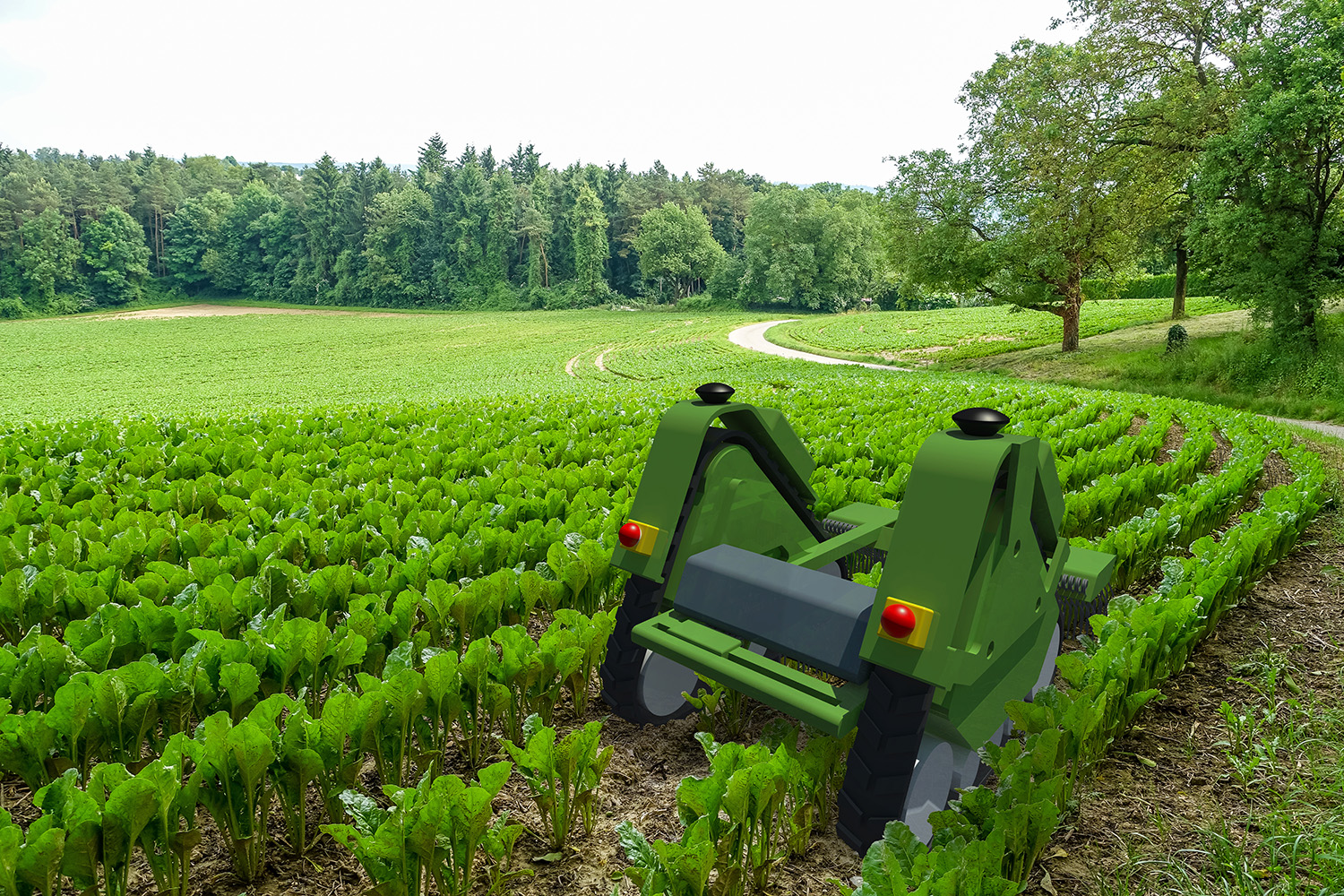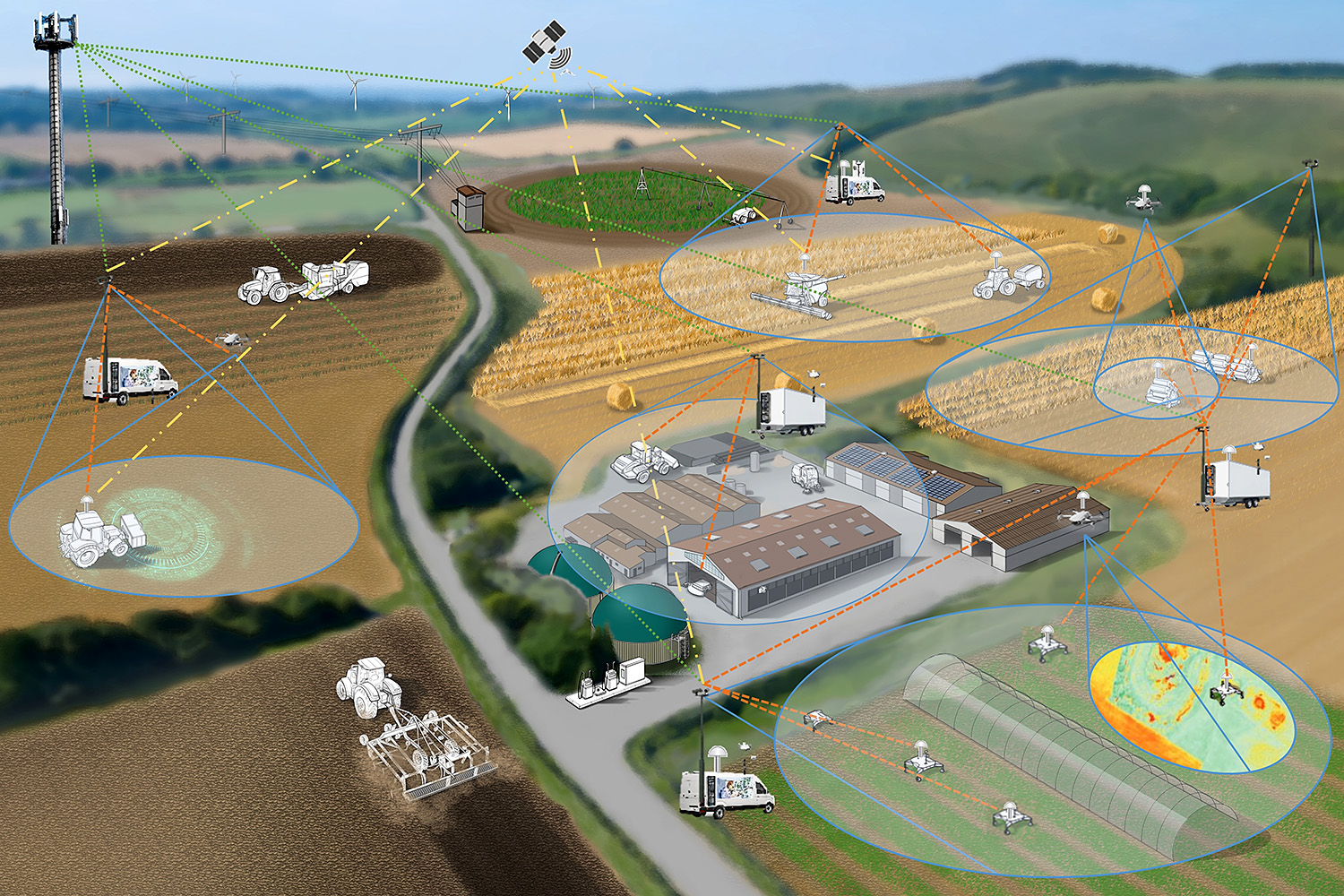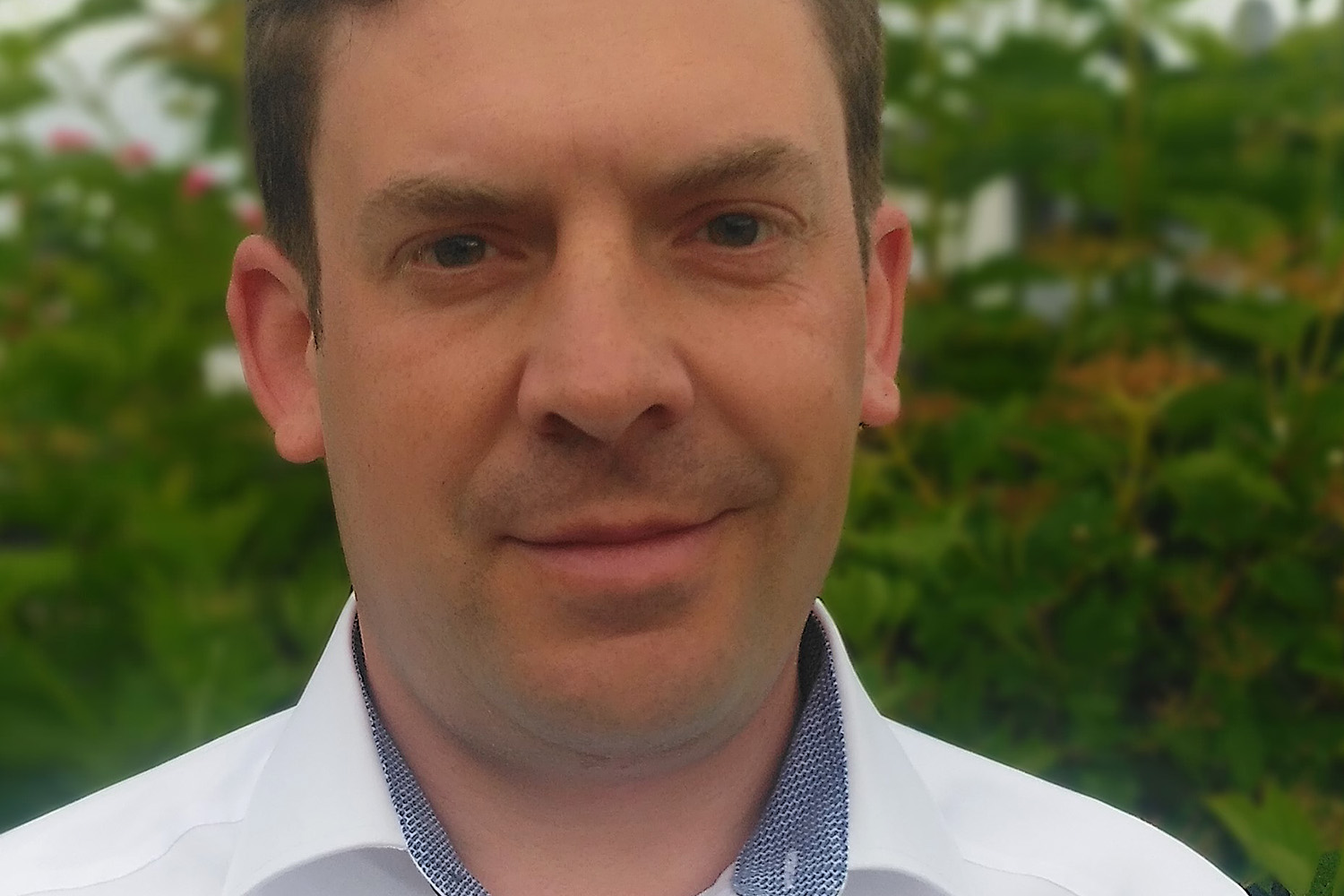In the field with a drone, field robot and AI TU Braunschweig involved in pioneering project on digitalisation in rural areas
In the “5G Smart Country” project, practical applications are being developed in the field of agriculture and forestry in the districts of Wolfenbüttel and Helmstedt. The project is funded with 3.9 million euros by the Federal Ministry of Transport and Digital Infrastructure (BMVI). TU Braunschweig is conducting research on this with the Institute of Mobile Machines and Commercial Vehicles in the “Smart Farming” sub-project: How can machines work together using 5G? What potential is there in shifting computationally intensive algorithms to the cloud? We talked to Dr Jan Schattenberg about what opportunities the new mobile communications standard 5G offers for field work.

Robot concept in the sugar beet. Photo credits: Fotolia.com/TU Braunschweig
Up to now, people have managed without a radio connection in the field. Why do you need 5G in agriculture?
In the past, of course, we got by without radio connections in the field. But it’s not as if we don’t have any today. At the moment, data transmission is more of an exception, i.e. it is not permanently required, and is used more for the transmission of order data, etc. Much of this takes place before or after field work on the farm, i.e. the transmission of order or yield data. However, agricultural technology – similar to industry – has changed in recent decades. Since in the past the increase in performance and efficiency was primarily drawn from the individual machines, this potential will soon be exhausted. In the future, a comprehensive, reliable and powerful data connection will also offer the possibility of optimising the use of entire machine networks.
Today we are talking about Agricultural Engineering 4.0 – in analogy to Industry 4.0?
Exactly, Industry 4.0 primarily requires networking along the value chain – i.e. also in production. Not the individual machine, but the cooperation of the machines and the higher-level planning are decisive. This can also be transferred to agricultural technology, specifically to field work. Here, network coverage in rural areas has been the main challenge in recent times. Technologies were introduced to the market that did not require permanent network coverage. In addition, technologies such as LoRaWAN were also developed to enable the exchange of information over longer distances. However, these approaches are not designed for the exchange of large amounts of data and short latencies. Their main purpose is rather the networking of sensor nodes such as weather stations. 5G, on the other hand, should enable the exchange of data between many participants with high bandwidth and short latencies with high area coverage.

This is what the interaction of autonomous mobile machines can look like. Here is a concept for the DFG large-scale facility FAMM “Flexible research field for autonomous mobile machines”. Picture credits: IMN/TU Braunschweig
What changes then?
The 5G area coverage offers the opportunity to carry out the data processing of the machines as an edge or cloud application and thus to shift performance-intensive computing operations such as image processing using AI from the machines to central data centres. It would then also be possible to optimise procedures and processes from a central instance. If it is possible to really bring 5G technology to the field and also implement the performance data there, especially in terms of latency and bandwidth, then this will be a great impulse in the area of automation in agricultural technology.
What smart applications are conceivable with it?
Many applications are conceivable – especially in the direction of high automation and autonomisation, especially for smaller machines or so-called field robots. Currently, every machine carries the computing technology with it to evaluate sensor data and thus operates autonomously. With 5G networking, the IT technology could be at least partially outsourced, costs could be saved and added value could be derived from the large amount of information available.
What expertise do you and your team bring to the “5G Smart Country” project?
The 5G project serves to investigate the emerging possibilities and validate them in the field. Together with the partners, we will investigate various scenarios, for example the cooperation of drones and field robots in the way described before, the shifting of computationally intensive algorithms to the backend, for example in the field of image processing for weed detection. In part, these are not new topics when considered individually, but they are being recombined, further developed and taken to a new level.
The main focus is to investigate whether 5G technology can meet the requirements in an agricultural environment. The institute has already worked on data exchange in machine swarms and the automation of agricultural machinery and robots in various projects in the past and is contributing this expertise. In addition, the institute forms a point of intersection in the consortium between the more agriculturally oriented partners such as the Lower Saxony Chamber of Agriculture on the one hand and the data processing specialists on the other.
Currently, there are already several providers of field robots that are already in use. However, the market is still very small. For example, when using the systems, a human operator often has to be nearby to intervene in an emergency. The costs are also still quite high. However, field robots will be used more and more, especially for weed control, which can be done mechanically rather than chemically. Since the area performance of the rather smaller and also slower moving robot systems is limited, more systems would have to operate simultaneously for the impact required in agriculture. Here, networking can help to reduce costs and thus presumably ensure further dissemination in the coming years.
Are such smart devices already in practical use?

Dr. Jan Schattenberg. Photo credits: Jan Schattenberg/TU Braunschweig
In my opinion, the next steps for implementing “smart farming” are to bring together the many approaches from research and to investigate them in practical applications. Agriculture is incredibly diverse in its characteristics. It starts with the soil, goes on to the weather, the plants etc. Research projects often examine individual aspects in specific scenarios. As an institute, we strive to conduct systemic studies and look at the whole picture. This is an important step, for example, to research new crop production systems that help to produce more sustainably. There are also strong links here with the Institute for Application Techniques in Plant Protection, headed by Prof. Dr. Jens Karl Wegener at the Julius Kühn Institute, the Johann Heinrich von Thünen Institute at the Braunschweig location in the area of business management and the local Institute for Agricultural Technology, headed by Prof. Dr. Christina Umstätter, both of whom also teach at TU Braunschweig. The DFG large-scale device FAMM “Flexible Research Field for Autonomous Mobile Machines”, which is currently being procured by our institute, will help to carry out systemic investigations in the field and answer many open, detailed questions.
